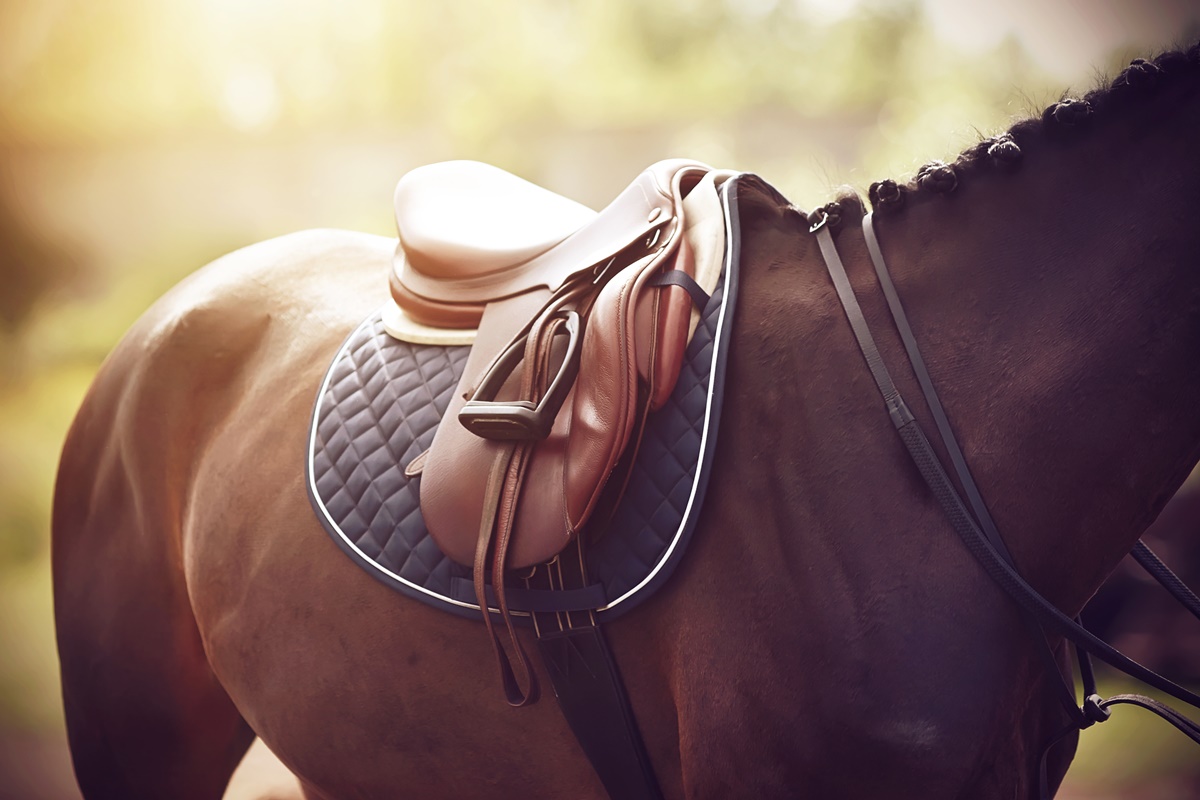The horse bridle is one of the most essential pieces of equipment for any equestrian. Understanding what are the different parts of a horse bridle is crucial for proper usage and maintenance. With advancements in technology, today’s bridles are designed to provide comfort for the horse and convenience for the rider.

Main Components of a Horse Bridle
Headpiece
The headpiece, or crownpiece, is the main strap that goes over the horse’s head, just behind the ears. It’s one of the primary parts of a bridle, supporting other pieces of the equipment.
Cheek Pieces
The cheek pieces attach to the headpiece and run down the horse’s cheeks. They connect to the bit, playing a critical role in controlling the horse’s head movements.
Browband
The browband sits just below the horse’s ears, across the forehead. It prevents the bridle from sliding back, ensuring stability and comfort.
Throatlatch
The throatlatch, or throat strap, runs under the horse’s throat from one side of the headpiece to the other. It prevents the bridle from being easily pulled over the horse’s head.
Noseband
The noseband encircles the horse’s muzzle, helping to keep the mouth closed for improved communication and control.
Bit
The bit is a crucial component that fits inside the horse’s mouth. It’s used to communicate with the horse through the reins, allowing the rider to guide and control the animal.

Reins
Main Reins
The reins are attached to the bit and used by the rider to guide and control the horse. They come in various materials, including leather and synthetic options.
Specialized Reins
There are different types of reins for specialized riding techniques, such as curb reins and snaffle reins, each serving specific purposes.

Types of Bridles
English Bridles
English bridles are commonly used in disciplines like dressage and show jumping. They are designed to be lightweight and provide excellent communication between the rider and the horse.
Western Bridles
Western bridles are used in Western riding disciplines. They are generally more robust and often come with decorative elements like conchos.
Bitless Bridles
Bitless bridles do not use a bit. Instead, they work through pressure points on the horse’s head and face, offering a more humane option for some horses.

Materials Used in Bridles
Leather Bridles
Leather is the traditional material used in making bridles. It offers durability and a classic look but requires regular maintenance.
Synthetic Bridles
Modern synthetic bridles are lightweight, easy to clean, and often more affordable than leather options.
Fitting and Adjusting a Bridle
Importance of Proper Fit
A properly fitting bridle is essential for comfort and effective communication. Ill-fitting bridles can cause discomfort and even injury to the horse.
Steps to Adjust a Bridle
Follow these steps to ensure your bridle fits well:
- Check the fit of the headpiece and adjust it accordingly.
- Ensure the browband is not too tight or loose.
- Adjust the cheek pieces so that the bit sits correctly in the horse’s mouth.
- Make sure the noseband is snug but not too tight.
- Adjust the throatlatch to allow for comfortable movement.
Maintenance Tips for Bridles
Cleaning Leather Bridles
Regularly clean your leather bridle with saddle soap and conditioning treatments to keep it soft and durable.
Caring for Synthetic Bridles
Synthetic bridles are easier to maintain. Simply wipe them down with a damp cloth and mild soap.
Common Issues and Troubleshooting
Signs of Wear and Tear
Inspect your bridle regularly for signs of wear and tear, such as fraying or cracking, and replace parts as needed.
Troubleshooting Fit Issues
If your horse shows signs of discomfort, revisit the fitting steps and make necessary adjustments.
FAQs
What is the Most Important Part of a Horse Bridle?
Every part of the bridle is important, but the bit and headpiece are crucial for effective communication.
How Often Should I Clean My Bridle?
Regular cleaning after each use is recommended, but a thorough cleaning once a week is generally sufficient.
Can I Use a Bitless Bridle for Any Type of Riding?
Bitless bridles are versatile and can be used for many types of riding, but it’s best to consult with a trainer for specific disciplines.
For more information on equestrian gear, check out our articles on Western saddle cleaning, Dressage saddle pads, and Saddle anesthesia.
External link: Cast iron skillet steak.
As an Amazon Associate, I earn from qualifying purchases.